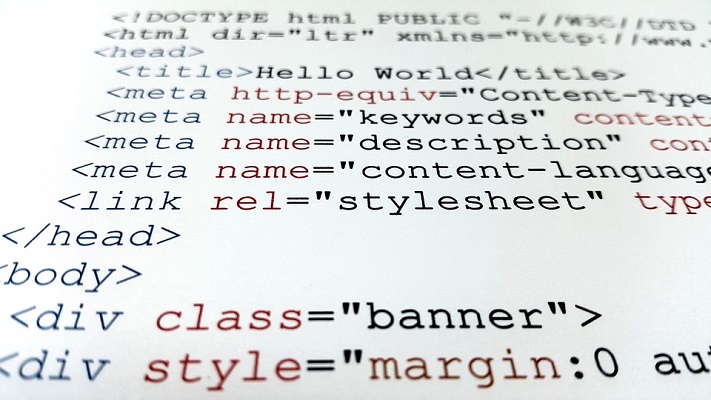
One of the factors that make a web page not reach its goals on the Internet, is that it is perhaps not among the minimum standards that should be offered to the public.
>
And as difficult as it may seem there are somewhat closed businesses on the network that have not adapted to new generations, and new ways of presenting information on the web.
So for a few years a concept has been handled that explains very well what a website should have on the Internet to be part of the best online services. That is why in this article we have prepared a small introduction to this exciting topic.
Index:
What is Web 2.0 and what is its origin on the Internet?
As novel as it may seem, the word “Web 2.0” is a somewhat misleading term, since it is not a substantial improvement in data transfer protocols.
This terminology became known after an O’Reilly Media conference in 2004, directed by Tim O’reilly and in open dialogue with Craig Cline and Dale Dougherty.

These characters really do honor the concept of web 2.0, since the 3 were entrepreneurial fans who supported the “Open Source” movements with all their strength. But then what does this intriguing concept really mean?
Web 2.0 referred to the enrichment and exponential growth that virtual communities were having, thanks to the new business models that were just booming.
At this conference it was emphasized that Adsense was part of this new stage of the Internet, which is very true as it contributes to the enrichment of the communities in the network.
A web 2.0 is a win / win business model, because the user when doing a search finds exactly what they are looking for and is satisfied. And the one who was responsible for placing the appropriate information, also receives a small help for the service provided. This could be interpreted as feedback.
That is why this 2004 conference emphasized the importance of “Long Tail” in the 2.0 web.
This concept known to seo experts encompasses what has been explained above, that is, a blog or website increases its level of positioning while improving the life of its users. Basically a Web 2.0 is an application or Internet site, which allows the author and user to interact and collaborate together to meet their objectives, allowing feedback in every way.
The other examples of this type of sites or applications will be known a little further down in this article.
Services and uses What is web 2.0 for?
Most Web 2.0s include or imply that there is a good interaction between users and the authors of each one. The services range from being able to respond with comments and opinions about what is You are looking at the site, until you can contribute your knowledge to improve the environment you are visiting.

Now we will see some of the sites that provide services considered 2.0 on the Internet, to understand this broad field:
- CMS: Content management systems are a clear example of what a web 2.0 is, as they provide the opportunity to become an author, and also to interact with contents of the different web pages created. The best known CMS are WordPress, Blogger, Jimdo, Wix, among others.
Apart from CMS there are other websites that allow the user to upload and share content for pure pleasure and even vocation, examples of these we have Youtube, Tumblr, Pinterest, Flickr.
- Social networks: Facebook, Instagram, Twitter and many others. This point is explained only because we all know the level of interaction that these platforms generate between users.
An important point that has had a lot of boom are the sites that serve to find distance and face-to-face jobs, these can be, Linkedin, Freelancer, Workana, and Fiveer.
- Wikis: These are the gigantic virtual encyclopedias, which are enriched as their users voluntarily decide to upload and update the content.
- Multimedia creation services: There are websites that offer services for creating and editing videos, photographs, infographics, presentations, for example, we have Prezi, Canvas, Mindmeister.
All those websites that allow you to set up your virtual businesses or manage investments are part of this type of websites, for example, Amazon, Ebay, Paypal, Skrill, Forex, Adsense, Shopify, Wish.
- In a last group we can include all those websites that allow access to free courses and payments on high quality topics, for example, Khan Academy, Udemy or Duolingo.
All these websites allow us to meet our needs as network users and at the same time promote our skills and sell our products and services on it.
What are the main features of a web 2.0?

Now we will see the features that allow a website to be powered up to level 2.0:
Simplicity and simplicity
In both the structure at the code level and in the design and location of each of the information items, simplicity must be included. This allows the user to find what they are looking for without distractions, plus a simple design increases the loading speed of the site.
This also includes a search bar so that the person can navigate and find the information on the site quickly.
Directionality
The topics should be focused on a specific point and maintain that direction all the time. Thus, the user can answer our calls to action at the time of a conversion or sale.
Multiplatform
A very important factor is that it must be able to work perfectly on any platform, whether on a computer, mobile or Tablet. As well as in the different operating systems Windows, Mac OS, Linux, Android and iOS.
That it is possible to interact
One of the most important points of a web 2.0 is that it allows the user to interact with the creators, as well as with the services of the page. That is why must include contact information with the respective social networks, emails and payment methods, in case of purchases.
How good is web 2.0? Pros and cons
The advantages of such pages are many for both the user and the author of the site, let’s see some of them:
For the authors:
- It is very easy and fun to develop your favorite projects and reach the masses quickly.
- Increase the chances of success promoting your products and services.
Open new communication fields and create new business opportunities.
For users:
- Encourage learning.
- Increase the personal development of those who know how to take advantage of these types of pages.
- Users have access only to the best information and the best services, eliminating the risks of virtual scams.
But, as all services are not perfect the great advantages of Web 2.0 creates some problems for human beings:
- The collective intelligence with which many things are raised on the Internet can cause lack of responsibility on the part of the authors , which can trigger poor quality content on the Internet.
- Due to the gigantic community that makes daily life in these sites the information is so much that it can be difficult to absorb, which can generate saturation and consumption of the user’s valuable time . li >
- With so much information bombardment, every day many human beings tend to isolate themselves from truly important things and neglect their social life off the screens.
- Another problem most common to those who face valuable content is that since everything is open source, virtually any malicious person can take advantage of your knowledge by selling or duplicating it on other sites .
>
What programming languages are used to create this type of portals and sites webs?

The structure of a Web 2.0 under the curtain is not at all different from a normal Web. Let’s get to know the languages that give life to a web 2.0: p >
JavaScript
It works with asynchronous technology and allows communication with the server for the exchange of information, usually encrypted.
PHP
The PHP language usually accompanied by HTLM allows web pages to have a dynamic design and adaptable to the new requirements of society.
Python
It is a very clean multiplatform syntax language that allows developers to give a correct structure to a website.
XML
This is one of the most universal languages that can exist and in the Internet, it allows the sites to have a better communication with the environment in which they are hosted.
HTML
It is the language that gives solid structure to Internet sites and allows developers and SEO experts to enhance their page to reach the top.
CCS
It is a language that manages the graphic part of a website, in order to generate impact on the public and make it visit the site more often.